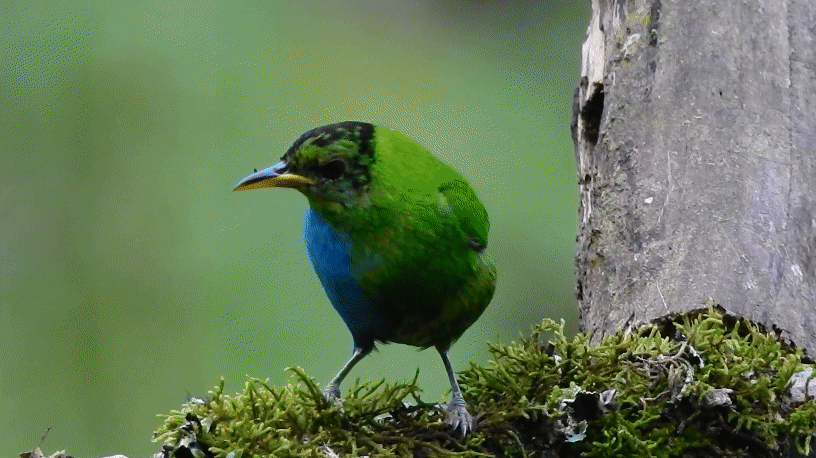Ornithologists in Colombia recently photographed a wild green honeycreeper with distinct half-green, or female, and half-blue, male, plumage.
Why in the News?
- This distinct honeycreeper discovered had male plumage on one half of its body and female coloring on the other.
- This differs from the typical males of this species, which are bright blue with a black head, and the females, which are grass-green all over.
- The rare phenomenon is scientifically known as bilateral gynandromorphic. It arises from an error during female cell division to produce an egg, followed by double-fertilization by two sperm.
About Green Honeycreeper:
- It is a small bird in the tanager family.
- Scientific Name: Chlorophanes spiza
- Distribution: The New World Tropics (Rainforests in Central and South America), from Mexico to Brazil.
- Features:
- It is 13–14 cm long and weighs 14 to 23 grams.
- The male is mainly blue-tinged green with a black head and a mostly bright yellow bill. The female is grass-green, paler on the throat, and lacks the male’s iridescence and black head.
- They are called Green Honeycreepers because the females and young birds are bright green with red eyes.
- Although males have, on average, slightly longer wings and tails than females, there is considerable variation within each sex and much overlap.
- It feeds largely on nectar, fruit, and insects and often frequents feeders supplying fruit.
- Conservation Status:
- IUCN Red List: Least Concern




